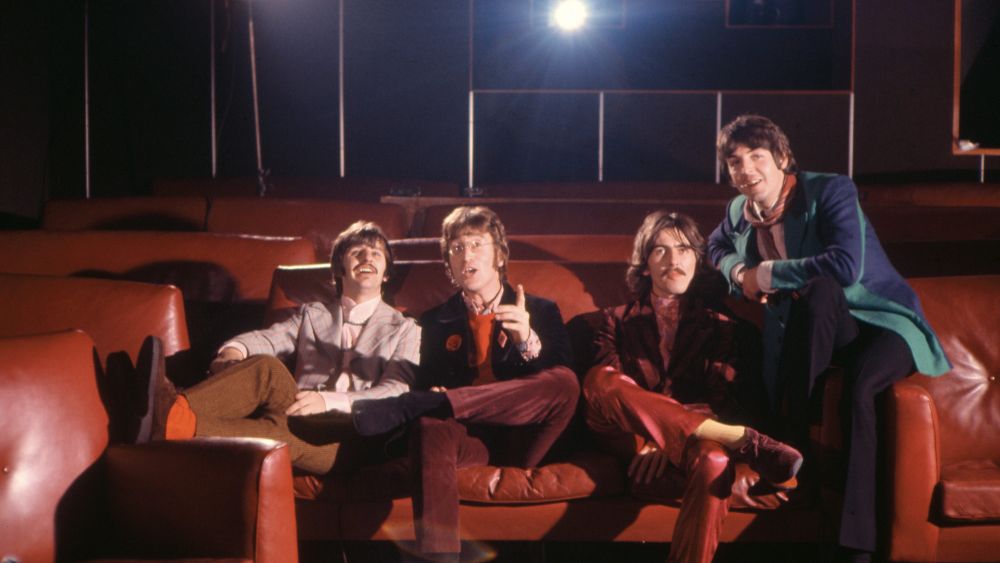
On 17 July 1968, The Beatles’ animated featured film ‘Yellow Submarine’ was given the red carpet treatment. But how involved with the movie were the Fab Four, really?
Yellow Submarine follows the inhabitants of Pepperland, a colourful world of music and love, home to Sgt. Pepper’s Lonely Hearts Club Band.
They face a surprise attack from the menacing, music-hating Blue Meanies who seek to destroy their harmony. The Beatles – in animated form – are summoned to save the day, embarking on a journey full of high jinks in the eponymous yellow submarine.
The creation of Yellow Submarine was sparked by a contractual obligation for The Beatles to provide a feature film.
However, due to the band’s busy schedule and limited enthusiasm for the project, they agreed to make only a brief live-action appearance and entrusted the animation to others.
The Fab Four only make a live-action cameo appearance in the final scene. Filmed on 25 January 1968, shortly before the band’s famous trip to India, it was done primarily to fulfil their contractual obligation to United Artists to actually appear in the film.
While some of The Beatles most iconic hits soundtrack the movie, the animated characters themselves were actually not voiced by the band members, but by actors.
In a very busy time for the group, director George Dunning and his team at the animation studio were tasked with transforming the band’s music into a surreal visual feast.
The film’s animation is vibrant and imaginative, showcasing a whimsical and visually stunning universe and capturing the essence of the psychedelic era.
While the storyline itself is light-hearted, some detractors suggested that the film had deeper symbolic meanings, often associated with drug culture prevalent during that time.
While it’s likely we’ll never know the truth about the meaning behind the ‘yellow submarine’ of the film or the 1966 song of the same name, it’s clear that it is addictive in some ways.
Rolling Stone magazine cited the song “the gateway drug that turns little children into Beatles fans”.
Upon release, Yellow Submarine received strong reviews from critics and has held onto its popularity among audiences, becoming a cult classic, especially appreciated by fans of the band.
That includes the late, great John Lennon. In a 1980 interview, he said: “I think it’s a great movie, it’s my favourite Beatle movie”.
Following Lennon’s death that December, the remaining three members of the band said it was their favourite of their films, with the late George Harrison saying “that film works for every generation”.
Its popularity does seem to transcend all kinds of borders. Before her death last September, it was widely rumoured that the trippy classic was a favourite of Queen Elizabeth.
Lennon was joined at the premiere by his future wife, Yoko Ono, on one of their first ever public appearances. Also in attendance were stars including Keith Richards and Anita Pallenberg – as well as, arguably, the true stars of the film – the actors who voiced the Beatles.
The film company didn’t invite them at first, keen to maintain the illusion of The Beatles having significantly more involvement in the project than was the case.
John Clive, Geoffrey Hughes and Paul Angelis were in attendance – the fourth, Peter Batten, had been arrested – towards the end of production.
While John Clive threatened to go to the press over the lack of invitation, he later recalled a rather sad evening at the premiere: “We came out and thought: ‘None of these people knows it’s us’.”
Yellow Submarine was followed up in 1970 by Let It Be, The Beatles’ final major feature film.
The documentary was shot over a four-week period in January 1969 as the band rehearsed and recorded songs for their twelfth and final studio album ‘Let It Be’. That film features a now iconic rooftop concert by the group, which was their last public performance before their split, made official at the end of 1970.










